

By definition,
Hence
When , we are told that
For , we have
Now do integration by parts,
But and the above becomes
But , hence the above becomes
Now do the same for
But we found from above to be
, hence
But from above, hence
Continuing this way, we find that , and hence in general
|
| (1) |
Now,
Hence from above we see that
Therefore (1) can be written as
But
Hence (2) becomes
But there are terms in the expression
in the denominator above
and we have
number of
sitting there, which we can distribute now below each terms to
obtain
|
| (3) |
But
Compare the above to the denominator term in (3) we see it is the same. Hence (3) can be written as
Which is what we are asked to show.

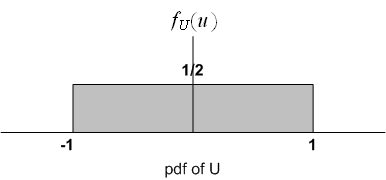
Since is continuous r.v., we start with the CDF of
But since , then we know that
Hence RHS of (1) becomes
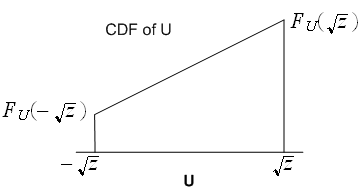
Therefore, taking derivatives with respect to we obtain
Since is uniform, hence
, hence the above becomes
Now I need to determine the limits of and the shape.
is defined for real arguments from
to
. i.e.
is real valued function of real arguments. Hence if
was negative then
will be
complex, and so this will not be allowed. Hence we have to restrict
. But now we observe that
is not possible, since we will have
term, so this means
is strictly larger than zero.
So
But we know that for up to
, hence this means when
then
, when
means when
then
Hence we now write
Here is a plot
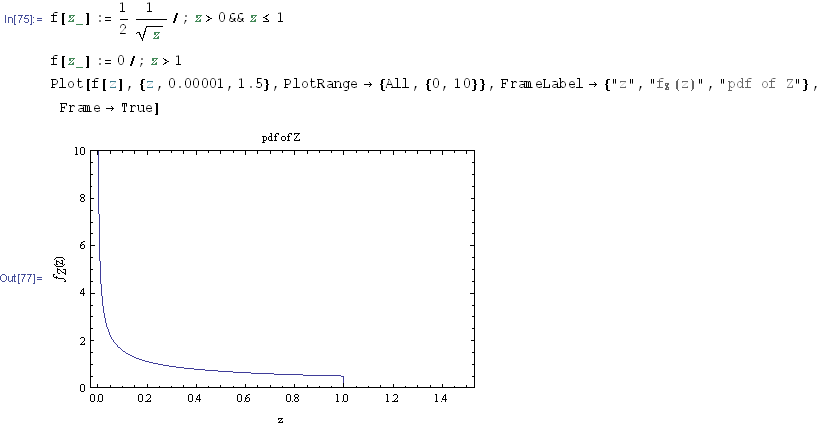

I explain the idea behind obtaining a discrete random number from a continues random number by the following diagram below. We assume that the discrete random number belongs to some distribution. In this example, we are told what the distribution is. We know that the CDF for geometric random variable is given by
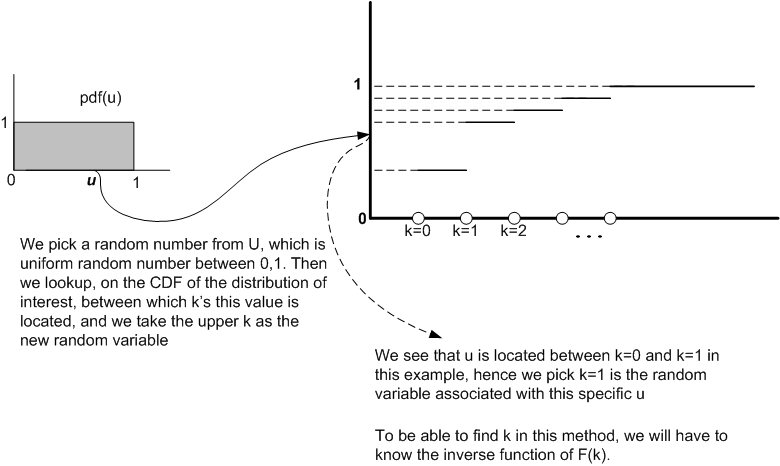
We see from the above diagram, that once we are given we need to find
which satisfy the following
identity
Or in other words
The specific discrete value which will satisfy the above, is the random variable we want, which belong to
the geometeric distribution.
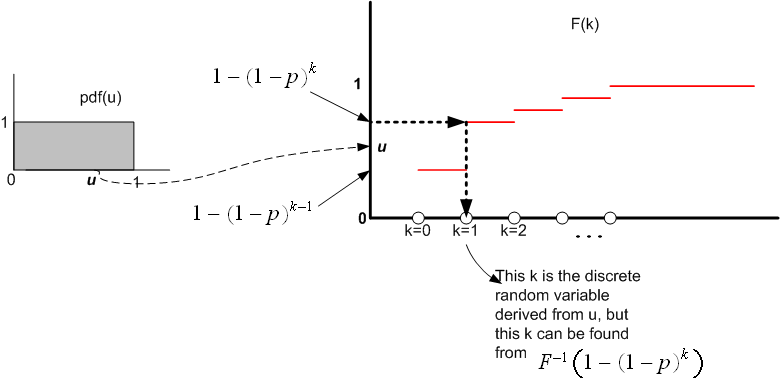
Now when and since
, we have
for we have
Now let us do
for we have
try
try
try
Now let us do
We see from the above, that this will have since for
the intervals is
Now let us do
From above, we see that this will have a larger than 4, so we do not need to try from the start, we can
start trying from
try
try
try
Hence result is
| | |
| | |
| | |
| | |
| | |
of course one would write a program to do this.

(a)
Let means probability of player
winning
rounds.
We have 3 players, and a total of 10 rounds. Let the players be called . Let the number of games
WON by
be
, and number of games won by
be
, and number of games won by
be
.
Since we have 10 rounds, then we must have 10 wins as well. (some one must win). Hence we have 10 wins
and 3 ways to split it, where each 'bucket' is of different size. So this is a multi set selection. called multinomial
in the book using proposition B in chapter 1, we see that the total number of ways the games can be won is
But we need to find the probability of each one such combination. So we need to multiply the above by the
probability each player wins the number of the games they happened to win, which is , but
for each player to win a round. Hence we write
So the above is the joint probability that wins
rounds and
wins
rounds and
wins
rounds.
(b)We need to find i.e. the probability of first player winning
rounds.
To simplify, let me write instead, where the position of the
implies the player.
So
means player one wins zero rounds and player 2 wins 1 round and player 3 wins 9
rounds.
So the above becomes
But since we see that we only need to count those terms in the above sum when this is
true. i.e. we do not need to count a term such as
since this is zero probability of happening. Now we
write
For example,
But and
, etc.. so the above can be written
as
and
and
and
and
and
and
and
and
and
and
Here is a plot of the marginal probability for player 1 winning rounds


(a)
Integrate by parts, , hence
and
, so we obtain
Do integration by parts again, ,
, hence
Hence
(b)The hard part is to determine the region to integrate. The following is the needed region which satisfy
and
and
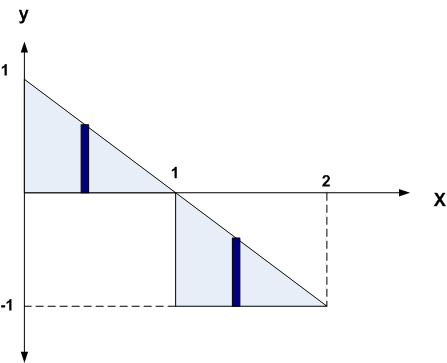
For the top region,
and for the bottom region
Hence